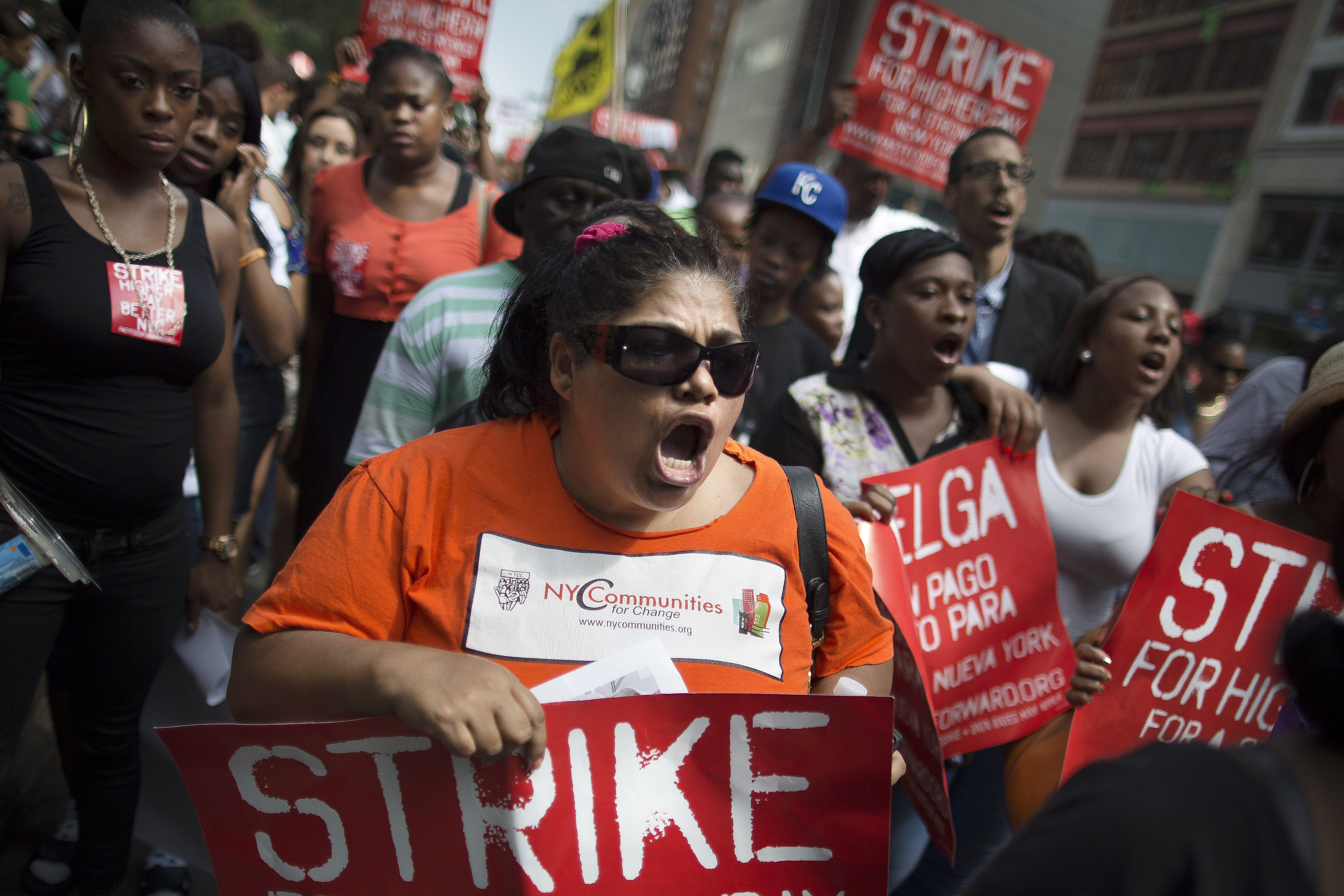As the largest state affiliate of the American Federation of Teachers, the New York State United Teachers is renowned for its opposition to school reform efforts such as using student test score data in teacher evaluations. It may soon be even more well known, this time for fiscal recklessness.
Videos by Rare
The New York union owes a lot more in pension and healthcare obligations to current and retired employees than it can reasonably pay. Between 2008-2009 and 2012-2013, NYSUT’s retiree obligations increased by 61 percent, faster than the 13 percent increase in revenue in the same period, according to an analysis of U.S. Department of Labor filings by Dropout Nation.
The union must now figure out how to pay $305 million in pension and retiree health benefits. It only has $102 million in assets that it could liquidate. NYSUT’s financial woes, along with concerns about the lack of fiscal transparency, is one reason why the union president Richard Iannuzzi was ousted from his job last weekend.
And NYSUT isn’t alone. Public- and private-sector unions and their locals are finding themselves struggling as mightily as governments and companies under the weight of pension and retiree health deals it struck with their own employees.
One such union is the Michigan Education Association. This affiliate of the National Education Association is notorious for its efforts to beat back Gov. Rick Snyder’s successful move two years ago to require teachers to contribute three percent of their salaries to the Wolverine State’s defined-benefit pension.
Now, the MEA may now have to follow Snyder’s lead to address its own pension woes. Between 2009 and 2013, it has barely made a dent in the retirement obligations is must eventually repay. The NEA affiliate’s $69 million in assets (as of 2013) isn’t enough to cover $165 million in pension and other postemployment obligations.
Another union temping fate is the New York affiliate of the American Federation of State County and Municipal Employees. The AFSCME local’s retirement obligations increased by 48 percent between 2009 and 2013. The union’s $44 million in retirement obligations would barely be covered by its $55 million in assets. The parent union itself has experienced a 66 percent increase in retirement obligations (from $37 million to $62 million) within that same period.
Then there is the Communications Workers of America, which represents workers in the telecommunications sector. Its pension liabilities increased by 88 percent between 2009 and 2013, according to its filing with Department of Labor. The union’s $279 million pension deficit wipes out half of its $564 million in assets. With revenues having declined by 60 percent within the past four years, it is questionable whether CWA can continue to shoulder the burden.
Pension obligations aren’t the only costs unions find themselves struggling with. Thanks in part to deals with their staffs — who are also represented by unions — public-sector unions are seeing skyrocketing benefits costs.
The NEA spent $66 million just on benefits in 2012-2013, a 33 percent increase over its spending four years earlier. These growing costs, along with declines in revenue after the success of efforts in Wisconsin and Tennessee to curb collective bargaining, explain why the union eliminated 68 employees earning six-figure sums two years ago.
The unions’ financial mismanagement shouldn’t be shocking. Three hundred sixty-one multi-employer pensions overseen by unions such as the International Brotherhood of Teamsters were identified as either being in critical or endangered status (in other words, insolvent) in 2013, according to the U.S. Department of Labor.
This includes the notorious Central States, Southeast, and Southwest pension operated by the International Brotherhood of Teachers, the nation’s second-largest multi-employer pension, which has just 60 cents in assets for every dollar in annuity payments it owes to its 273,384 participants. The pensions were underfunded to the tune of $369 billion, according to a report released two years ago by Credit Suisse.
Likely in worse shape are multi-employer healthcare plans, also called voluntary employee beneficiary associations, into which workers and companies pay. Teachers and school districts in Indiana learned this the hard way four years ago when the NEA had to take control of its affiliate, the Indiana State Teachers Association, after the union’s VEBA went insolvent after bungled investments in hedge funds. Other NEA-operated healthcare trusts such as the Teachers Health Trust in Las Vegas are also struggling.
Like state and local governments, which agreed to ever more generous annuity payouts without specifying who will pay, unions overpromised their employees and then failed to deliver by contributing more to the plans. The fact that public-sector unions, in particular, count on ever-increasing revenues from forced dues payments by civil servants meant that they could spend fecklessly on staff. The NEA, for example, employs 369 employees making $100,000 or more while the AFT has 198 workers earning six-figure sums on staff.
But now, the long-term decline of unions in the private sector is hitting unions just as their pension costs are increasing. Thanks to cuts in state and local government spending, along with the efforts of some cost-cutting governors, public-sector unions are unable to add more rank-and-file members who can contribute more in order to help offset increasing pension obligations.
Unions could stop overpromising benefits to the team. At the rate things are going, however, they may go bust before they change their ways.



